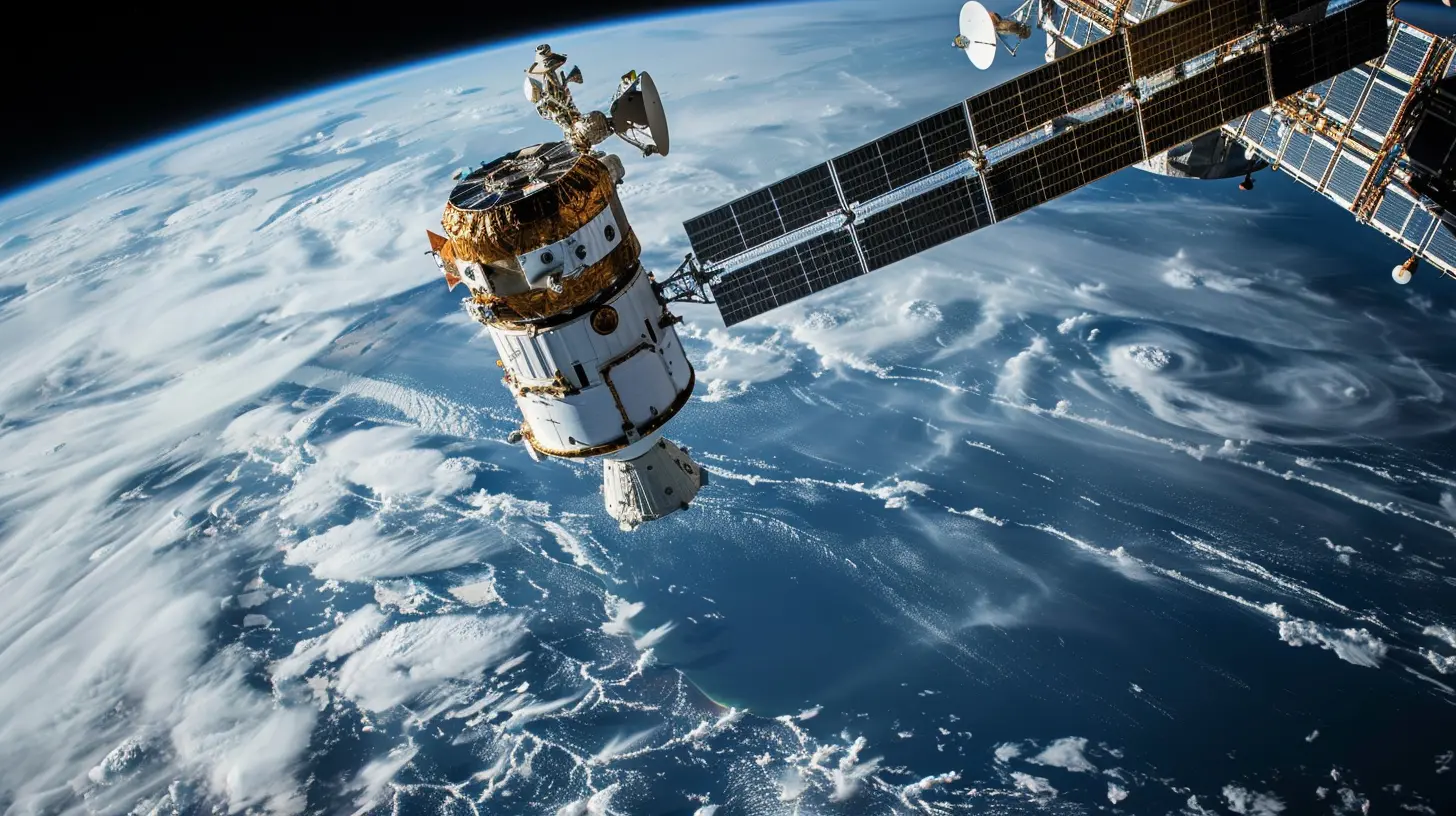How Space-Based Solar Power Could Energize the Earth
9 August 2025
When it comes to energy, we’re all looking for the next big thing. Fossil fuels? They’re on their way out. Wind? Great, but not always reliable. Solar? Fantastic! But, what if we could take solar power to a whole new level—literally, out of this world? That’s where space-based solar power comes in, and it could be the game-changer we’ve all been waiting for.
Think of it: harvesting solar energy from space, where the sun never sets, and beaming it down to Earth. Sounds like science fiction, right? Well, not for long. Space-based solar power (SBSP) is not only possible, but it's also within our reach. In this article, we’ll dive into exactly how this technology could transform our energy landscape, why it’s a big deal, and what challenges we need to overcome to make it a reality.
What Exactly is Space-Based Solar Power?
Before we get into the nitty-gritty, let’s break down the concept of space-based solar power. It’s pretty much what it sounds like—gathering energy from the sun using solar panels in space and then transmitting that energy back to Earth.So, why space? Well, the sun is constantly shining in space. Unlike here on Earth, where we have pesky things like clouds, nighttime, and weather conditions that can block the sun, space offers a 24-hour supply of sunlight. No interruptions. No rainy days. Just pure, uninterrupted solar energy.
How Does It Work?
The basic idea is simple, but the tech behind it is anything but. Here’s how space-based solar power works in a nutshell:1. Solar Panels in Orbit: Massive solar panels would be placed in geostationary orbit, which means they stay in the same position relative to Earth, always facing the sun.
2. Energy Conversion: These panels collect solar energy and convert it into electricity.
3. Wireless Transmission: The electricity is then converted into microwaves or laser beams and beamed down to a receiving station on Earth.
4. Energy Distribution: The receiving station converts the beams back into electricity and feeds it into the power grid.
Sounds straightforward, right? But as you might guess, it’s a bit more complicated than that. Let’s explore why.
Why Space-Based Solar Power Could Be a Game Changer
You might be thinking, “Why bother going all the way to space for solar energy when we have plenty of sunlight on Earth?” Well, there are several reasons why SBSP could be a total game changer for how we power our planet.1. 24/7 Energy Supply
One of the biggest limitations of traditional solar energy is that it’s, well, inconsistent. Solar panels on Earth can only generate power when the sun is shining, which means they’re useless at night and less effective on cloudy days. Space-based solar power doesn’t have that problem. The sun is always shining in space, so SBSP could provide a constant, reliable source of energy 24 hours a day, 365 days a year.2. No Geographical Limits
Another advantage of SBSP is that it doesn’t matter where you are on Earth—you can still receive power. Whether you’re in the middle of a bustling city or a remote area far from any power infrastructure, SBSP could provide energy. This could be a game changer for parts of the world that currently don’t have reliable access to electricity.3. Clean and Renewable
We all know that we need to move away from fossil fuels if we want to tackle climate change. SBSP offers a clean, renewable energy source that doesn’t produce greenhouse gases. Plus, since the energy is generated in space, there’s no need to clear land or disrupt ecosystems to install solar panels, wind turbines, or other forms of renewable energy.4. Less Land Use
Traditional solar farms require a lot of land to be effective. In fact, some of the largest solar farms on Earth span thousands of acres. With space-based solar power, you don’t need any land at all, which means we can preserve more of the planet’s natural habitats while still generating massive amounts of energy.
The Challenges of Space-Based Solar Power
Of course, no energy solution is perfect, and space-based solar power is no exception. While the potential benefits are huge, there are also several significant challenges that need to be overcome before SBSP can become a reality.1. High Costs
Launching anything into space is expensive—really expensive. And we’re not talking about a simple satellite launch here. To make space-based solar power work, we’d need to launch massive solar arrays, each one potentially the size of several football fields. The costs of building and launching these arrays, not to mention the receiving stations on Earth, would be astronomical (pun intended).However, with the recent advancements in space technology, such as reusable rockets (thanks, SpaceX!), the cost of launching stuff into orbit is decreasing. So while it’s still a challenge, it’s not impossible.
2. Energy Transmission
Beaming energy down from space sounds cool, but it’s also incredibly tricky. Scientists are still working out how to efficiently and safely transmit energy from space to Earth. The most likely method involves using microwaves, but there are concerns about the potential environmental and health impacts of beaming large amounts of energy through the atmosphere.On the bright side, researchers are working on ways to make the energy transmission process safe and efficient. But we’re still in the early stages, and there’s a lot of work to be done before we can start beaming solar energy down from space.
3. Space Debris
Space is getting crowded. Satellites, space stations, and other debris already clutter Earth’s orbit, and adding giant solar panels into the mix could increase the risk of collisions. If a piece of space junk were to crash into one of the solar arrays, it could cause significant damage and disrupt the energy supply.There’s ongoing work to address space debris, but it’s something we’ll need to keep in mind as we consider putting more infrastructure into space.
The Future of Space-Based Solar Power
So, will space-based solar power ever become a reality? The short answer is: we don’t know yet. But there’s a lot of reason to be hopeful. Several countries and organizations are already investing in SBSP research, and we’re seeing steady progress.1. Global Interest
China, Japan, and the European Union are all actively pursuing space-based solar power projects. In fact, Japan’s space agency, JAXA, has been working on SBSP for years and has already conducted successful tests of wireless energy transmission. Meanwhile, China has announced plans to build a space-based solar power station by 2030.The United States is also getting in on the action. NASA has explored SBSP in the past, and private companies like Northrop Grumman are developing their own concepts for space-based solar power systems.
2. Technological Breakthroughs
Every year, we’re seeing advancements in space technology that could make SBSP more feasible. For example, the cost of launching payloads into space is steadily decreasing thanks to reusable rockets. Meanwhile, improvements in solar panel efficiency and energy storage could make space-based solar power systems more effective.Another exciting possibility is the use of robots or autonomous systems to assemble solar panels in space. This could drastically reduce the costs of building and maintaining SBSP systems.
What Does This Mean for Us?
If space-based solar power becomes a reality, it could revolutionize the way we power our world. Imagine a future where clean, renewable energy is available to everyone, no matter where they are. A world where we’re no longer reliant on fossil fuels, and where energy shortages are a thing of the past.Of course, we’re not there yet. There are still plenty of technical and financial hurdles to overcome, but the potential is enormous. And with the right investments and innovations, space-based solar power could play a crucial role in our transition to a sustainable, energy-efficient future.
Conclusion
Space-based solar power is an exciting and promising technology that could change the way we think about energy. It offers a constant, renewable energy supply that could help solve some of the biggest challenges we face today, from climate change to energy inequality. But, like all new technologies, it comes with its own set of challenges, from high costs to complex technical issues.Still, the future looks bright. With continued research, investment, and innovation, space-based solar power could one day become a reality. And when it does, it could light up the world—literally.
all images in this post were generated using AI tools
Category:
Space TechnologyAuthor:

Ugo Coleman
Discussion
rate this article
1 comments
Willow McAlister
What an exciting concept! Harnessing solar power from space could revolutionize energy access globally. Can't wait to see how this technology develops and impacts our future!
August 12, 2025 at 2:54 AM

Ugo Coleman
Thank you! We're excited about the potential of space-based solar power to transform global energy access too! Stay tuned for developments!


